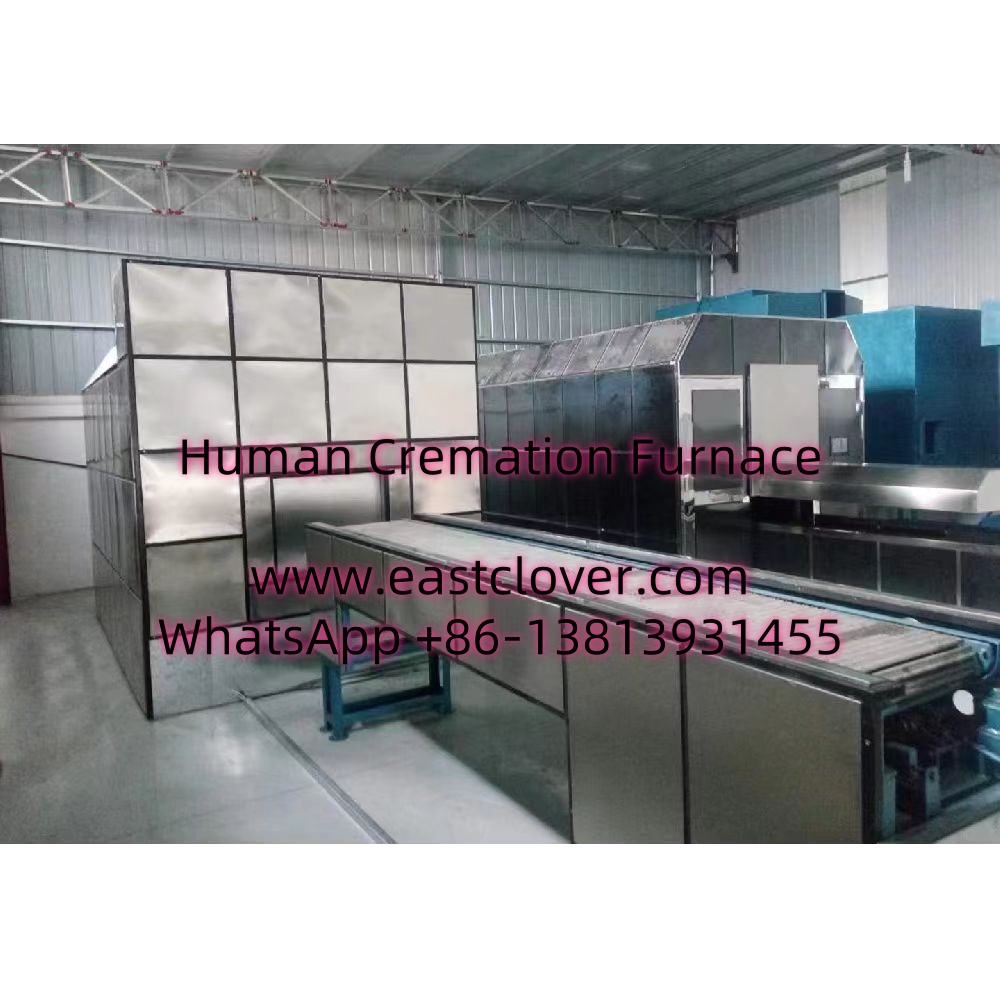Addressing Uganda’s Burial Challenges with Innovation
In Uganda, traditional burial practices have long been a cornerstone of cultural and spiritual life. However, urbanization, population growth, and environmental pressures are exposing the limitations of these customs. Limited land availability, public health risks, and the financial burden of burials are prompting communities and policymakers to seek sustainable alternatives. Enter mobile container human cremation furnaces—a groundbreaking solution combining modern engineering with cultural adaptability to revolutionize deathcare in Uganda.
The Need for Innovation in Uganda’s Deathcare
Uganda’s burial practices face three critical challenges:
- Land Scarcity: Rapid urbanization has reduced available land, making traditional burials unsustainable.
- Environmental Impact: Burials contribute to soil and water contamination, while deforestation for coffins exacerbates ecological strain.
- Public Health Risks: Cemeteries near populated areas pose contamination risks, especially during floods or disease outbreaks.
Cremation offers a practical alternative, but conventional crematoriums are expensive and lack the flexibility to serve rural areas. Mobile container furnaces bridge this gap.
What Are Mobile Container Cremation Furnaces?
These modular units are built within shipping containers, retrofitted with advanced combustion systems, emission controls, and energy-efficient designs. Key features include:
- Portability: Easily transported to urban and rural areas via truck or rail.
- Eco-Friendly Operation: Filters capture particulate matter, reducing emissions by up to 90% compared to traditional pyres.
- Cultural Flexibility: Designed to accommodate pre-cremation rituals, such as vigils or religious ceremonies.
- Cost-Effectiveness: Lower operational costs than fixed crematoriums, with fees 30-50% cheaper than traditional burials.
Benefits of Mobile Cremation Units
Environmental Sustainability
Cremation in these units reduces land use and prevents groundwater contamination from embalming chemicals. A single unit can serve 10–15 cremations daily, offsetting the need for 5–7 acres of cemetery land annually.
Public Health Improvement
By minimizing overcrowded cemeteries, these units mitigate disease spread. During the 2022 Ebola outbreak, a pilot unit in Kampala safely managed high-risk remains, preventing further transmission.
Economic Accessibility
Families save on coffin costs, burial permits, and long-term grave maintenance. Municipalities also reduce expenses by repurposing cemetery land for housing or agriculture.
Overcoming Challenges
Adoption requires addressing:
- Cultural Perception: Misconceptions about cremation “disrupting ancestral connections” persist. Community education campaigns, led by local leaders, are vital.
- Regulatory Frameworks: Uganda lacks national cremation guidelines. Partnerships with the Ministry of Health and NEMA are essential to establish safety standards.
- Infrastructure: Units require stable fuel access (LPG or biogas) and trained operators. Solar-powered models are under development for off-grid areas.
Case Study: Kampala’s Pilot Success
In 2023, a mobile unit deployed in Kampala’s Nakawa Division processed over 200 cremations in six months. Surveys showed:
- 78% of users cited affordability as the primary reason for choosing cremation.
- 65% appreciated the option to hold a traditional ceremony before cremation.
- Local air quality monitors reported no significant pollution spikes.
www.southclover.com
Mobile container cremation furnaces offer Uganda a scalable, culturally sensitive solution to modern deathcare challenges. By conserving land, reducing costs, and prioritizing public health, these units align with global sustainability goals while respecting local traditions. Success hinges on collaborative efforts between governments, communities, and innovators to ensure equitable access and acceptance.
Frequently Asked Questions
How much does a mobile cremation unit cost?
A single unit ranges from $50,000 to $120,000, depending on capacity and emissions technology. Operational costs average $15–$30 per cremation.
Are cremations culturally acceptable in Uganda?
While burials remain dominant, awareness campaigns and interfaith dialogues are increasing acceptance, particularly among urban populations.
What happens to ashes after cremation?
Families may scatter ashes in meaningful locations or store them in biodegradable urns. Some units offer ash-compacting services for jewelry or memorials.
How do mobile units handle power outages?
Advanced models include battery backups and dual-fuel capabilities (LPG/biogas) to ensure uninterrupted operation.
Can these units process animal remains?
Yes—modified versions are used for livestock, reducing disease spread in farming communities.

Comments are closed